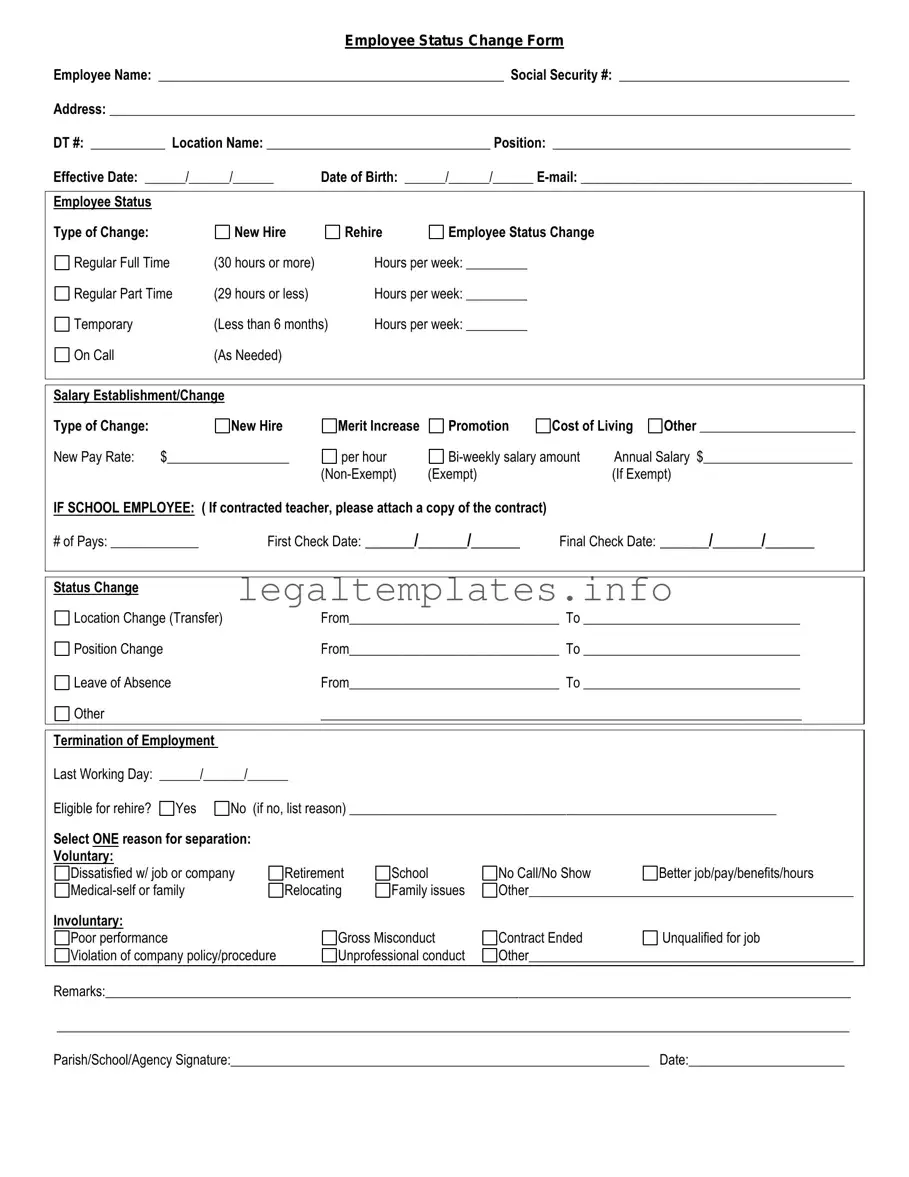What is an Employee Status Change form?
The Employee Status Change form is a document used by organizations to record any changes regarding an employee’s role within the company. This includes promotions, demotions, transfers, salary adjustments, and changes in employment status, such as from part-time to full-time.
When should an Employee Status Change form be submitted?
It should be submitted immediately after an official decision has been made regarding an employee's status change. This ensures that records are updated in a timely manner and that the employee receives any changes in benefits or compensation without delay.
Who is responsible for completing the Employee Status Change form?
Typically, the employee's direct supervisor or the Human Resources (HR) department is responsible for completing the form. However, it’s important for both the employee and their supervisor to review the information for accuracy.
What information is needed to fill out an Employee Status Change form?
Information needed includes the employee's full name, employee ID, department, current job title, proposed job title, current and proposed salary, type of change (e.g., promotion, transfer), and effective date of the change.
How is the Employee Status Change form submitted?
Submission processes vary by organization. Some may require a paper form to be filed with HR, while others may use an online system. Employees should check with their HR department for specific procedures.
Can an Employee Status Change form be submitted electronically?
In many organizations, yes, an Employee Status Change form can be submitted electronically through an internal system designed for HR documentation. It’s best to check with the HR department for available options.
What happens after the Employee Status Change form is submitted?
Once submitted, the form will be reviewed by HR and any other necessary department heads. The change will then be officially recorded, and applicable adjustments to salary, benefits, and employment records will be made. The employee will be notified once the process is complete.
Is it possible to reverse an Employee Status Change?
Reversing an employee status change depends on company policies and the specific circumstances surrounding the change. If there's a need to reverse a change, it’s crucial to discuss the matter with HR as soon as possible.
Who can access the information submitted on an Employee Status Change form?
Access to the information is typically restricted to those within the organization who have a need to know, such as HR, payroll, and the employee’s supervisor. This is in line with privacy and confidentiality policies to protect employee information.

